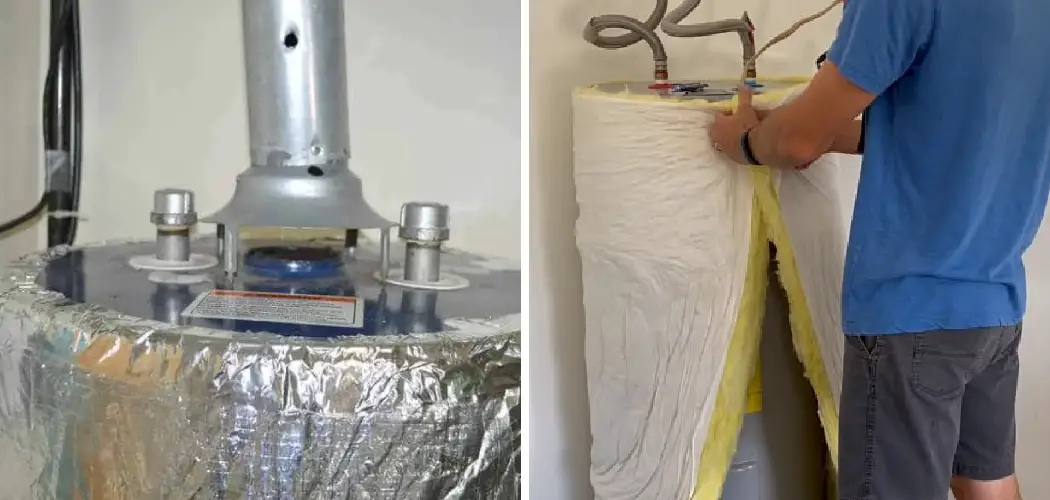Are you looking to save energy and money in your home? Installing a water heater blanket is an effective way to do just that. This helpful DIY project only requires minimal tools, making it the perfect choice for homeowners wanting to take on a simple yet meaningful home improvement task. In this blog post, we’ll discuss the step-by-step process of how to install a water heater blanket so that you can ensure proper insulation and thermal protection for your hot water system.
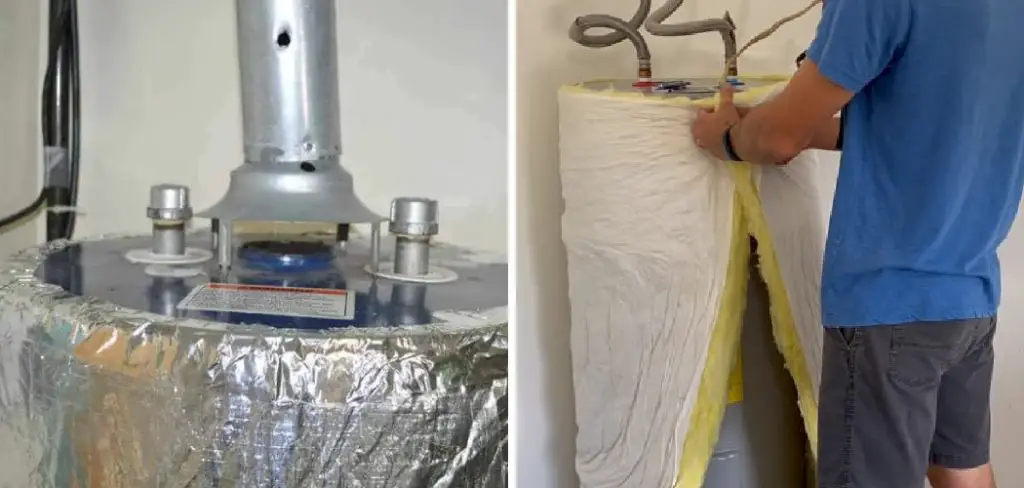
Installing a water heater blanket can help you reduce your energy costs and increase the efficiency of your hot water system. With the cost of energy rising, it makes sense to try and keep your heating bills low by installing affordable accessories like a water heater blanket. Not only will this save on energy costs, but it will also prolong the lifespan of your hot water heater.
Here, we’ll show you step-by-step how to install a water heater blanket with some simple tools so that you can start reaping the rewards that come with increased savings and efficient hot water production!
5 Benefits of Installing a Water Heater Blanket
1. Increased energy efficiency
A water heater blanket helps to reduce heat loss and conserve energy by keeping the water in your tank hotter for longer periods of time. This means that you will use less energy to reheat the water, saving money on your heating bills.
2. Improved comfort level
With a properly installed water heater blanket, you can expect the water temperature to remain more consistent. This can help reduce fluctuations in the hot water supply that can often leave you feeling uncomfortable.
3. Reduced noise
A water heater blanket helps to absorb sound so that your tank is quieter when it’s running, making it easier to sleep or relax without being disturbed by its noises. Also, make sure to check for any loose fittings that may be causing the noise.
4. Reduced wear and tear
A water heater blanket can help protect your tank from the elements, reducing rusting or corrosion of its exterior walls. This will increase the lifespan of your tank and make maintenance easier in the long run.
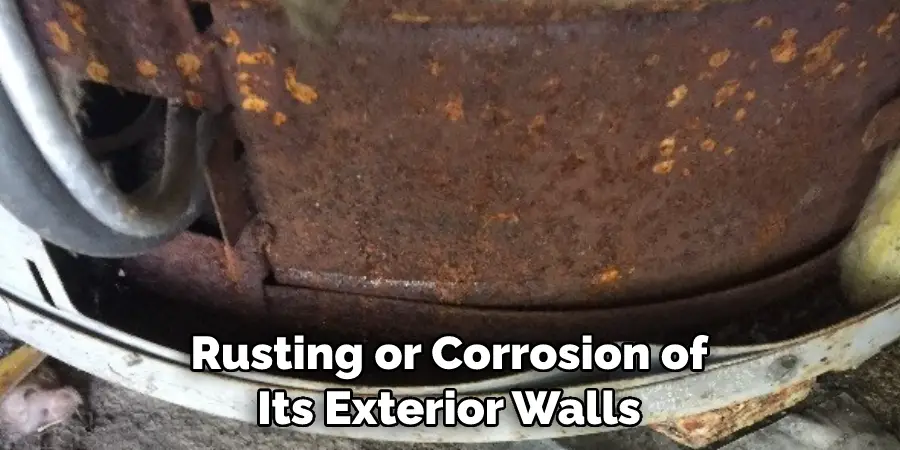
5. Improved safety
Finally, water heater blankets help to reduce the risk of fire or explosions due to leaks. They also provide a layer of insulation that can keep your tank from overheating, protecting you and your family from potential harm.
Installing a water heater blanket is an easy and cost-effective way to save energy, improve comfort levels, and ensure safety. Follow the steps below to make sure your installation is successful.
How to Install a Water Heater Blanket in 6 Easy Steps
Step 1: Choose a Water Heater Blanket
The very first step is to purchase a properly sized water heater blanket. It is important to measure the height, width, and depth of your water heater before selecting a blanket. You have to make sure that you are choosing the right size for your water heater.
Step 2: Preparing Your Water Heater
Before installing the blanket, it is important to turn off the power and cold water supply to your water heater. You should also close the drain valve and disconnect any gas lines from the unit if necessary.
Step 3: Installing the Water Heater Blanket
Unwrap the blanket and slide it over your water heater. Make sure it is centered in place and that there are no gaps or wrinkles. Secure the edges of the blanket with tape to keep it in place. It will help keep the blanket snug and secure against your water heater.
Step 4: Sealing Up Gaps
Once the blanket is in place, use caulk to seal up any gaps or seams between the blanket and the water heater. This will ensure that there is no air leakage which could cause damage to your unit. Also, check for any holes or tears in the blanket and repair them with tape as needed.
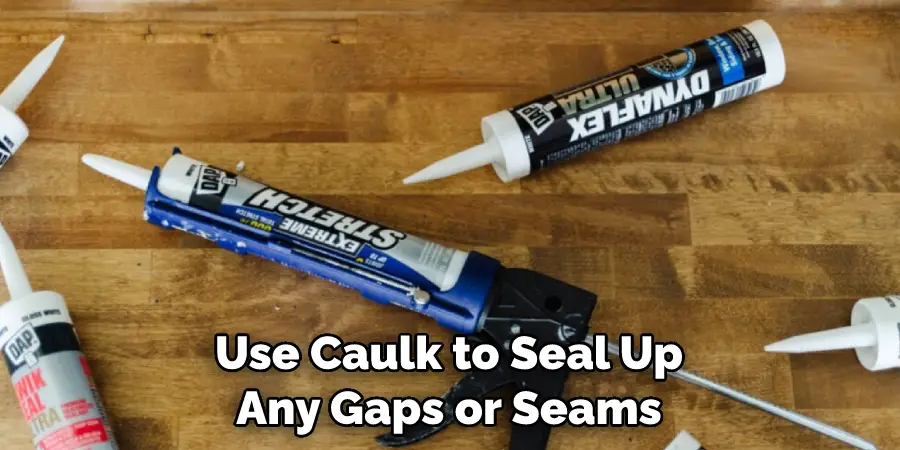
Step 5: Reconnect Gas Lines and Drain Valve
Once you have sealed up all the gaps, reconnect your gas lines and drain valve to the water heater. You should also open the cold water supply to allow the water to fill up again. You can now turn the power back on and check for any leaks before using your water heater again.
Step 6: Checking the Blanket
It is important to periodically check your water heater blanket to ensure it is still snug and secure against the unit. If you find that the blanket has shifted or come loose, re-secure it with tape and caulk as needed.
Finally, you can enjoy the energy savings provided by your newly installed water heater blanket! It will help keep your water warm and provide cost savings by keeping energy usage down. With proper installation and regular maintenance, you will be able to get many years of use out of it.
Some Additional Tips to Install a Water Heater Blanket
1. Do Not Overlap the Blanket
This is very important for the best performance. Any overlapping of the blanket can lead to overheating and cause potential damage. It will also cause the blanket to wear out faster. Make sure the blanket is installed properly with all edges and corners properly aligned.
2. Use Tape for Seams
It is important to securely tape all of the seams on the water heater blanket so it fits snugly and doesn’t come loose during operation. This will prevent any air from getting into the blanket and causing a hot spot that could damage your appliance or even start a fire.
3. Check the Fit
Before closing up the water heater and turning it on, make sure you check that the blanket has been installed properly and securely. Make sure all of the edges are flat and that there aren’t any gaps or air pockets in between them.
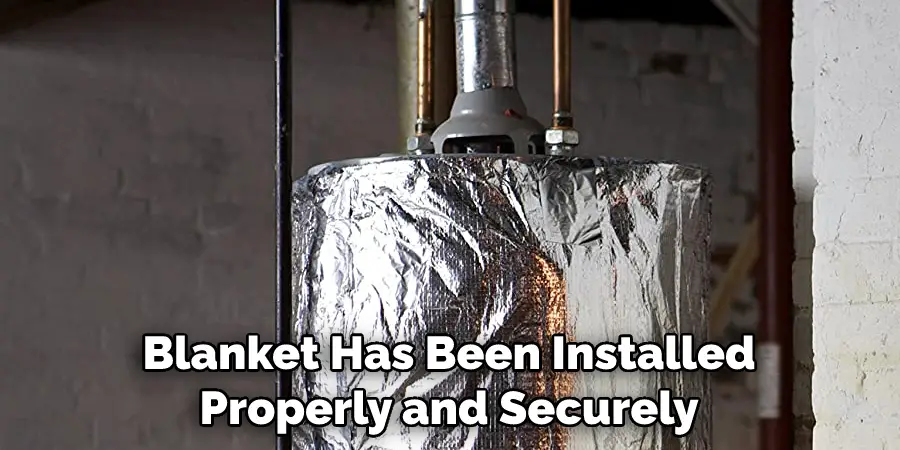
4. Make Sure it Fits Tightly Around The Heater
The heater should fit securely inside the blanket for optimal performance. Any gaps between the two can cause heat loss, leading to higher energy bills as well as potential fire hazards. Before installing, make sure that the blanket fits tightly around the sides and top of the heater.
5. Use Insulation Tape
It is important to use insulation tape when installing your water heater blanket, as this will help secure the edges of the blanket in place, ensuring that there are no gaps or air pockets between them. This will help keep heat inside the blanket, helping it perform better and last longer.
6. Securely Fasten the Blanket to The Heater
Once you have taped all of the seams and made sure that the blanket fits tightly around your heater, it is time to secure it in place. To do this, use zip ties or some other type of tie to hold the blanket firmly against the heater. This will help keep the blanket in place and prevent any air from getting inside, increasing efficiency and performance.
Finally, make sure to check that all of the edges of the blanket fit tightly against the sides and top of the heater before turning it on. Doing this regularly will ensure that your water heater runs smoothly and safely for years to come.
Frequently Asked Questions
What Precautions Should I Take When Installing a Water Heater Blanket?
It is important to take the necessary safety precautions when installing a water heater blanket. Make sure that you read and follow all manufacturer instructions carefully. Wear protective clothing, including gloves, eye protection, and long-sleeved shirts and pants. To avoid electric shock, make sure that your water heater is turned off and unplugged before you begin. Additionally, it is important to avoid contact with insulation materials that have been exposed to moisture or high temperatures which could potentially be hazardous.

Are Water Heater Blankets Effective?
Water heater blankets are an effective way of increasing the efficiency of your water heater. The insulation helps to slow down the transfer of heat so that more energy is used to heat the water and less is lost. This can result in savings on your monthly energy bill. Additionally, it can help to reduce your water heater’s wear and tear which will extend its life expectancy.
What Are the Advantages of Installing a Water Heater Blanket?
Installing a water heater blanket can help to increase the efficiency of your water heater and decrease energy costs. Additionally, it can improve the safety of your home by reducing the risk of fire or electric shock. It also helps to reduce noise pollution caused by running hot water, which is beneficial if you have close neighbors.
Conclusion
Now you know how to install a water heater blanket. Installing a water heater blanket may seem daunting, but with the help of this guide, you have the skills and knowledge to get started. Not only will it save you time and money in the short term, but it can also protect your home in the long run from any unexpected repairs or replacements.
Don’t forget to check for any broken seals, rust spots, or damaged insulation on a regular basis to ensure that your water heater is always functioning optimally.
Finally, keep an eye out for local tax incentives or rebate programs that may be available in your area; you could end up saving big on your heating bills while going green! With a little preparation and effort, you can make sure that your water heater setup is optimized and efficient indefinitely.

